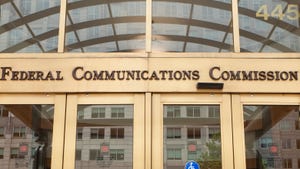LTE World Summit: Reality settles in
Messages from the LTE World Summit ripple throughout the mobile market globally, as it is the biggest event for the new technology where operators, vendors, regulators and other stakeholders share and discuss about the new technology and its progress in the market. As such, it is an ideal gauge of commercial aspects of the technology and Informa’s analysts have identified several key trends, some of which were expected, some of which were not.
May 24, 2011

By Dimitris Mavrakis
Messages from the LTE World Summit ripple throughout the mobile market globally, as it is the biggest event for the new technology where operators, vendors, regulators and other stakeholders share and discuss about the new technology and its progress in the market. As such, it is an ideal gauge of commercial aspects of the technology and Informa’s analysts have identified several key trends, some of which were expected, some of which were not.
Commercial progress
TeliaSonera, Verizon Wireless, NTT DoCoMo, Vodafone and Deutsche Telecom are now spearheading the rollout of LTE and were actively marketing the new technology and its benefits. A quick calculation (courtesy of @twehmeier) shows that LTE subscribers are now close to a million, largely driven from US operators Verizon Wireless and Metro PCS. TeliaSonera mentioned that it has now accrued approximately 10,000 subscribers and Vodafone Germany has connected 20,000 fixed subscribers to its LTE network.
In the case of North America, it makes sense for mobile operators to aggressively market their LTE network as they can take advantage of 3GPP economies of scale, which include networks and devices – and migrate from a latent value chain (CDMA) to a global standard. Moreover, 4G LTE – as Verizon refers to the new technology in its marketing material – provides a serious competitive advantage against AT&T. In the North American market, LTE is gaining significant consumer interest and initial reports – excluding LTE handset battery life – illustrate that subscribers welcome the speed and latency improvement.
Business models
TeliaSonera’s example illustrates that in developed markets where technology leapfrog is not a driver, mobile operators are having a difficult time justifying the Return of Investment (ROI) for the new network and may not be able to price accordingly to attract mass-market interest. For reference, TeliaSonera charges €60 for it’s highest tier LTE monthly contract while it’s highest tier HSPA+ contract is valued at €30 (TeliaSonera is however running a promotional campaign, offering half price subscription to its LTE service for 6 months and offers lower tier LTE contracts with smaller traffic allowances).
On a similar note, NTT DoCoMo expressed concerns on whether operators can command a premium for LTE compared with existing HSPA/HSPA+ subscriptions. This is perhaps justified by the fact that NTT DoCoMo is in one of the most advanced markets where connectivity is abundant through existing mobile, fixed and WiFi networks. This illustrates that in saturated, advanced markets consumers may believe that the price premium is more of a deterrent compared with the improvements in speed or latency.
Apart from wholesale (further analysis here) and charging a premium for LTE, there was little discussion around market-ready business models during the conference. Although operators did discuss new applications before (including RCS, HD video and video conferencing) there was little mention of these – and in fact any – new potential services.
TeliaSonera also mentioned that it will not allow VoIP over its new LTE network, charging a premium for access to OTT packet switched voice in an effort to protect its existing voice revenues.
Spectrum
Spectrum fragmentation was cited as the most important barrier to worldwide adoption of LTE. However, a panel of leading operators cited handset availability the biggest problem when asked what the most challenging issue for them is. In the short term, economies of scale for handsets, devices, chipsets and base stations is critical for the worldwide deployment of LTE but roaming and spectrum issues are most likely to become more important when deployments mature. Operators that are either deploying LTE now or in the short term future are doing so in the bands that are available to them; as refarming and new spectrum auctions proceed, more frequencies will be available for LTE, somewhat increasing the fragmentation issue and pushing LTE further away from the global nature it was intended for.
Informa Telecoms & Media has identified 8 key bands for LTE worldwide and an upcoming post will discuss spectrum issues in more detail.
Future outlook
Next year’s LTE World Summit will see more operators having launched LTE and more commercial sense regarding business models and market acceptance of the new standard. Informa also expects that first experiences with VoLTE operation and experiences regarding the interoperability of LTE and legacy 3G networks will appear. Moreover, operators will have decided on the nature of the business model they plan to implement with LTE by next year’s show and Informa expects that it will be access oriented – including wholesale, faster speed or fixed service replacement.
Read more about:
DiscussionYou May Also Like








.png?width=300&auto=webp&quality=80&disable=upscale)


_1.jpg?width=300&auto=webp&quality=80&disable=upscale)